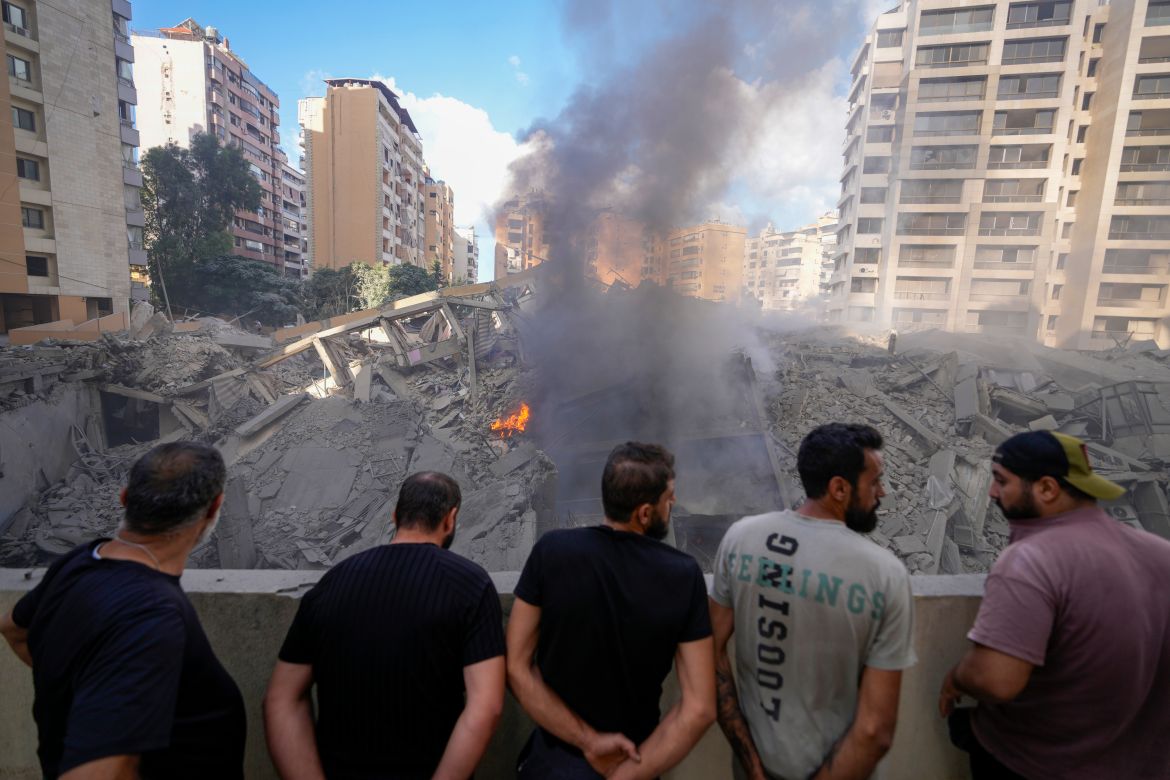In Pictures
People check the site of an Israeli air strike in Dahiyeh, Beirut, Lebanon. [Hassan Ammar/AP Photo]Published On 2 Oct 20242 Oct 2024
In Beirut’s southern suburbs on Wednesday, smoke was rising from buildings hit by overnight strikes while young men on mopeds sped along largely empty roads and residents grabbed what they could from their homes, some driving off with mattresses tied to car roofs.
Mohammed Sheaito, 31, one of the few not leaving, said that “during the night, the ground shook below us … and the sky lit up” from the force of the strikes.
“The area has become a ghost town,” said the taxi driver, who has sent his parents, his sister and her children – already displaced by Israeli bombing in south Lebanon – to safety elsewhere.
An area of tightly packed blocks of flats, shops and businesses, Beirut’s southern suburbs are also home to Hezbollah’s main institutions.
Israel says it is targeting sites belonging to the Iran-backed militant group, which was founded during the Lebanese civil war after Israel besieged the city in 1982.
A series of Israeli raids last week hit the southern suburbs – known as Dahiyeh – before a strike on Friday killed Hezbollah chief Hassan Nasrallah, with raids on the area increasing after that.
Thousands have fled the bombings because of Israeli army evacuation orders on social media posted ahead of some strikes.
Some are staying with relatives, and others in schools-turned-shelters in Beirut or in rented flats. Those with nowhere to go have been sleeping on the streets.
Mohammed Afif, the head of Hezbollah’s information office, told journalists on a media tour that all the buildings hit in Dahiyeh were “civilian buildings and are not home to military activity”.
